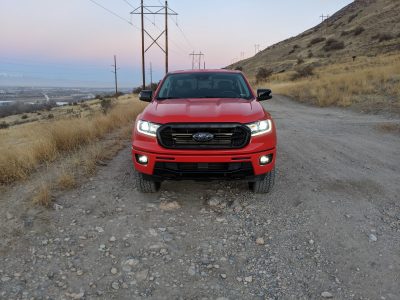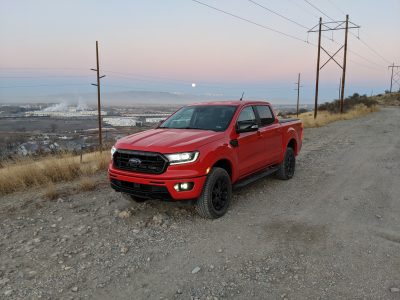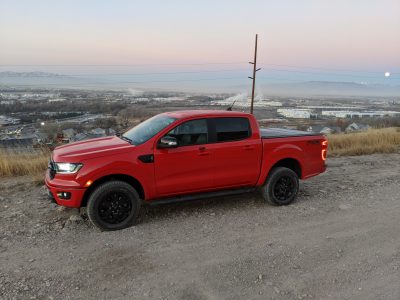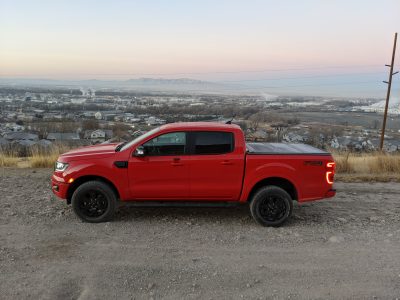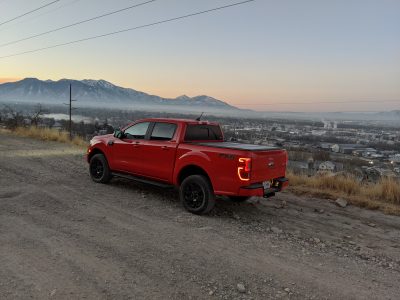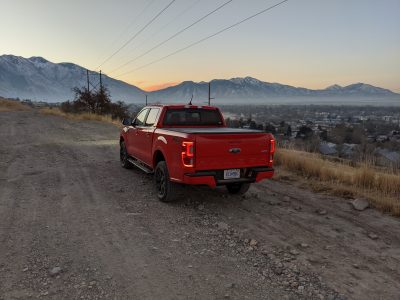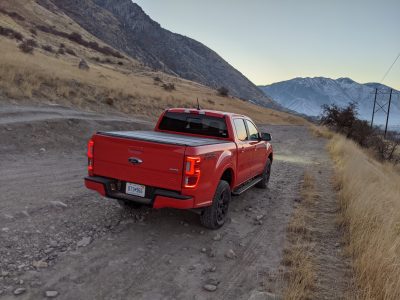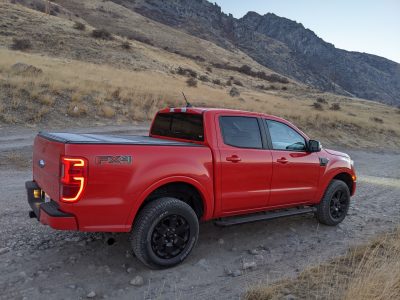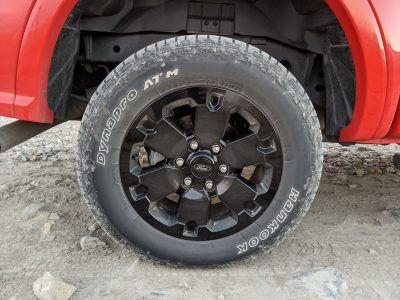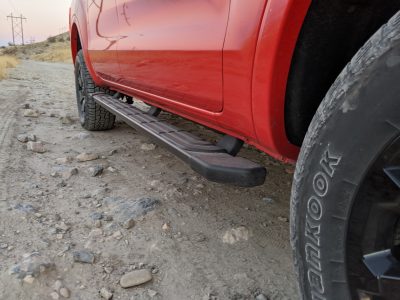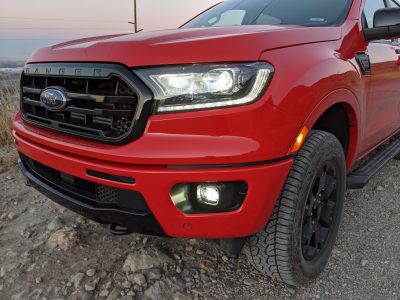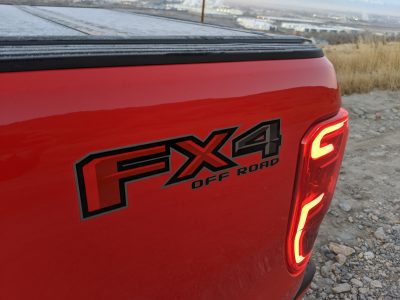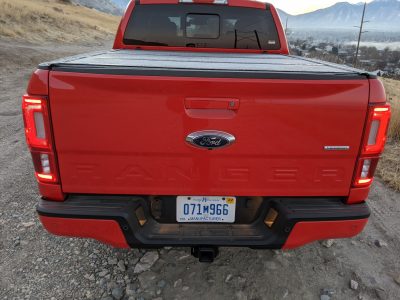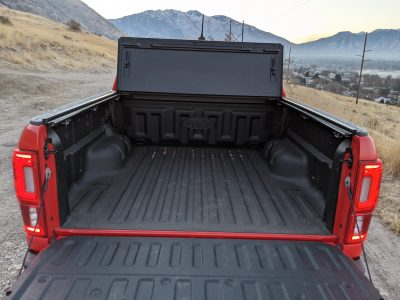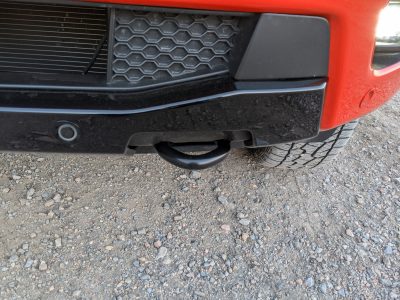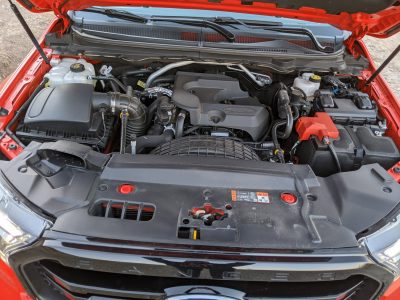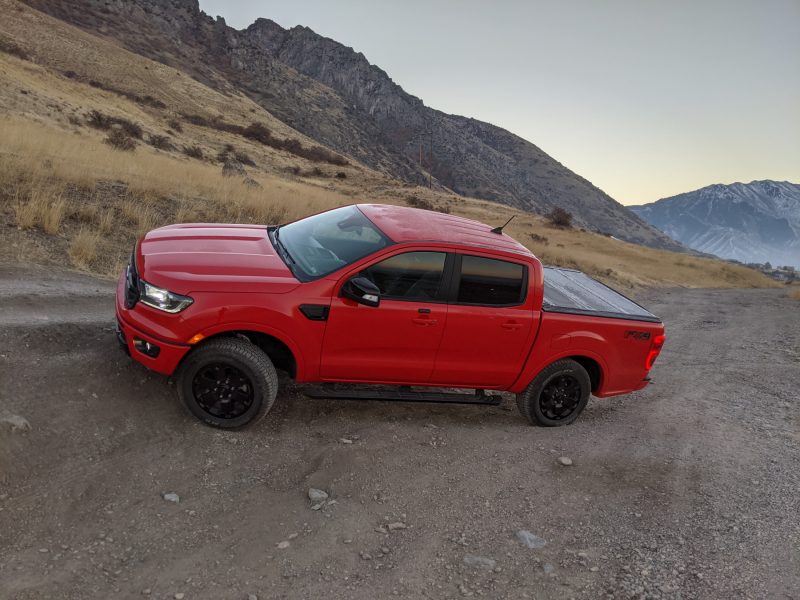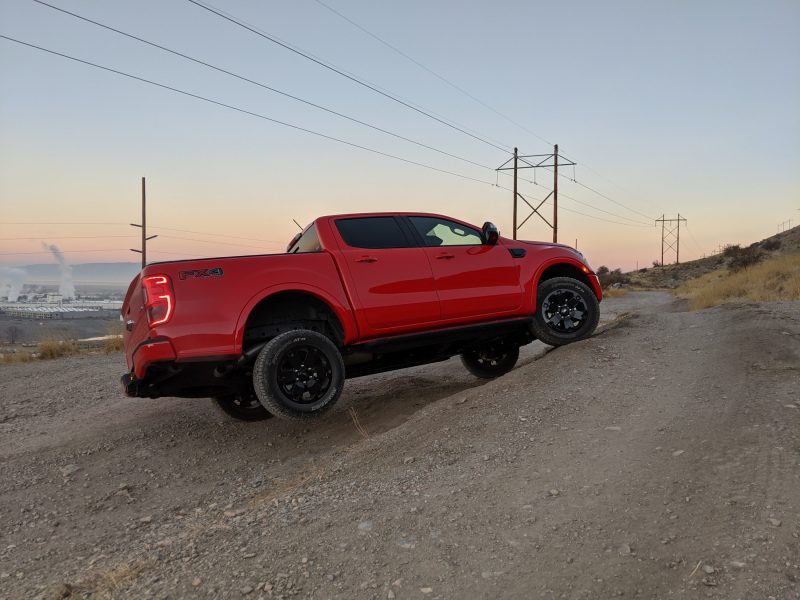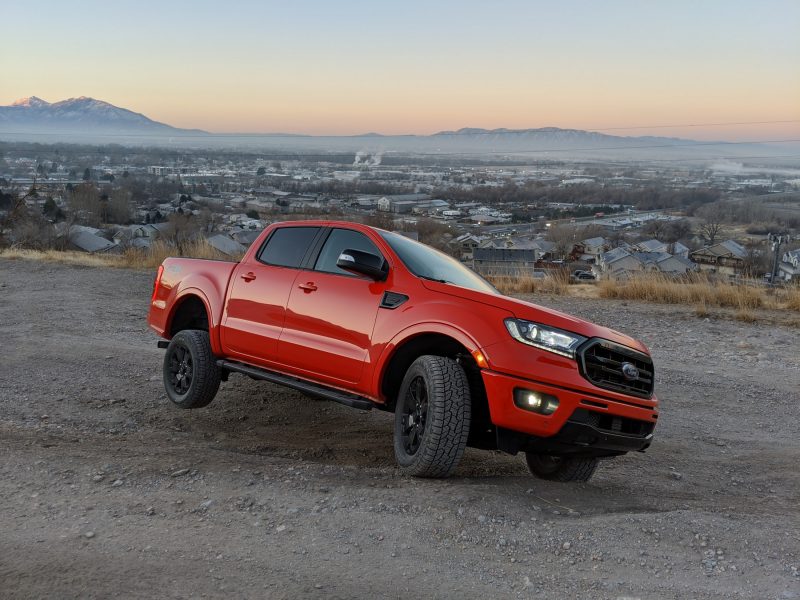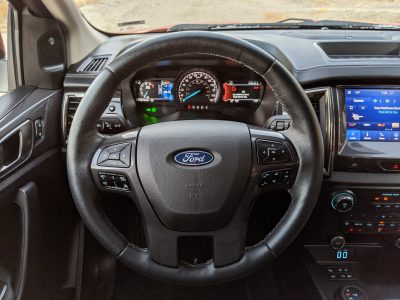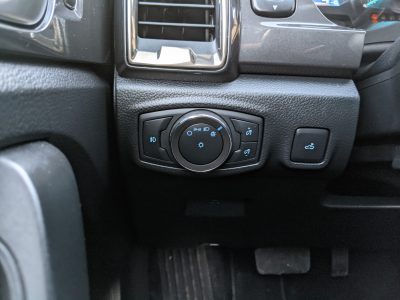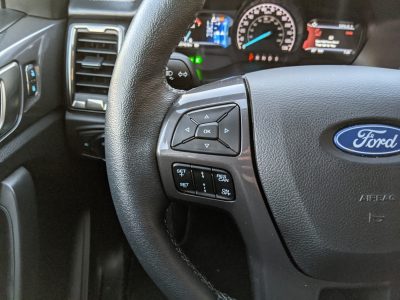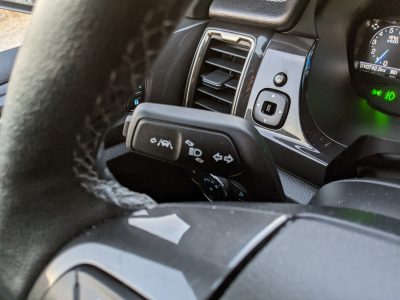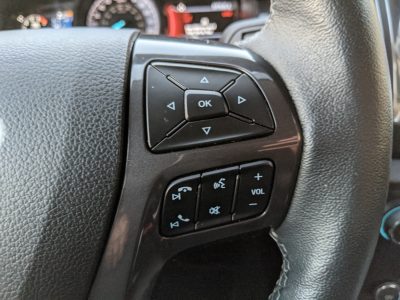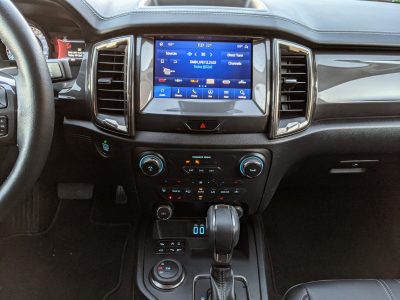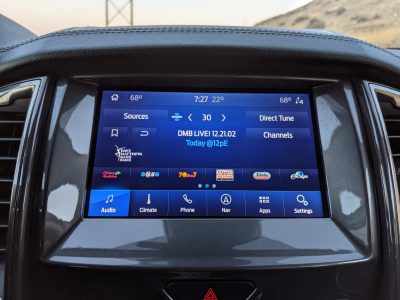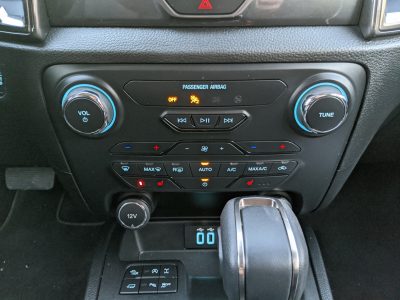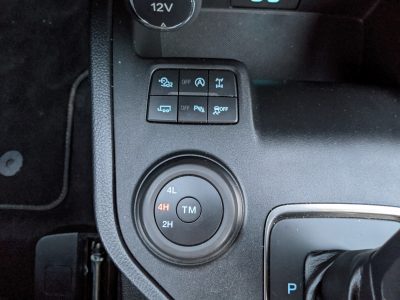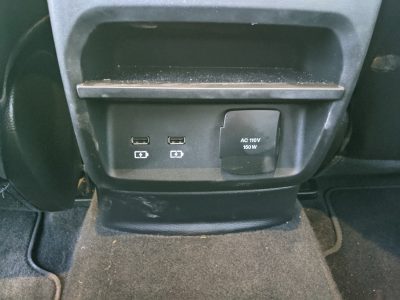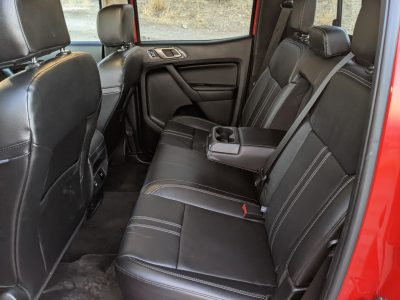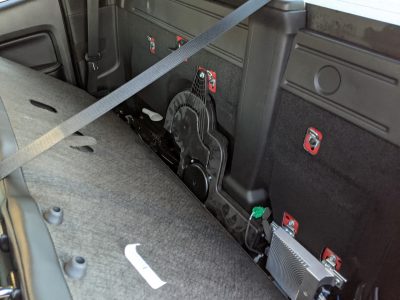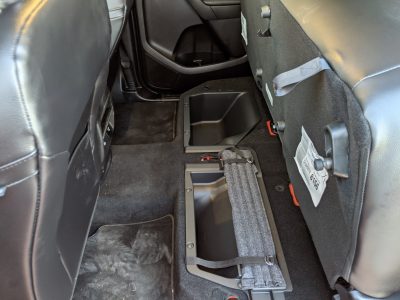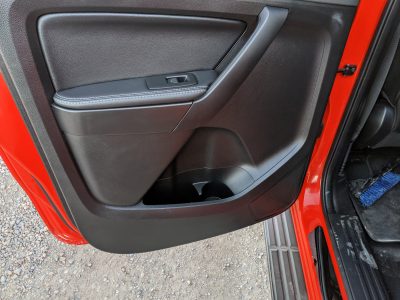2020 Ford Ranger Lariat
Ford brought the Ranger back to the U.S. as a 2019 model year. However, it has been living its life globally since 2015. While that is still much newer that the 2021 Nissan Frontier that’s been around since 2005, its not exactly the all new platform it appears to be.
On-Road
One of the first things noticed when driving the Ranger is that the rear suspension is stiff. The payload capacity of the Ranger is in line with many half-ton trucks. Consequently, this makes the little Ranger feel harsh over bumps when unladen, but also provides for very little body lean and good handling feel when driving twisty roads.
In the U.S. the engine of choice is 2.3-liter EcoBoost inline four with 270-HP and 310 lb-ft of torque. No other engines are available. Which is ok because it produces the highest torque of any gas engine in the class. However, peak torque is bested by the 2.8-liter Duramax in the GM twins and 3.0 EcoDiesel in the Gladiator.
Power is routed through a ten-speed transmission, which performs well. Having so many gears allows the Ranger to have a low crawl ratio of 47.6:1. The Ranger bests the Tacoma and Colorado ZR2 having crawl ratios of 36.1:1 and 41.4:1 respectively but falls behind the Frontier and Gladiator at 54.4:1 and 77.2:1 (for the automatic) respectively.
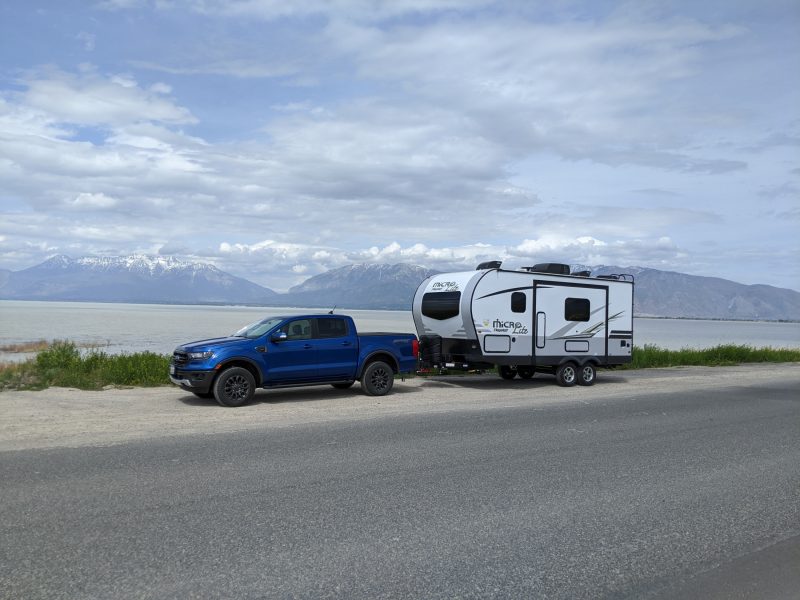
Towing with the Ranger
While we didn’t tow with the same Ranger Ford sent us for a week, we have towed with a 2020 Lariat trimmed Ranger before. Nevertheless, the biggest difference between the two is the one we towed with had the 4×4 Sport package and the one Ford sent us had the FX4 package.
Remarkably, towing with the Ranger is surprisingly easy for a truck this size. With a maximum tow rating of 7,500-pounds, the Ranger had little issue towing a 4,700-pound Flagstaff Microlite travel trailer. The 10-speed transmission does shift a lot and runs a little warmer than others, but it never got too hot in our testing.
Interestingly enough, Ford has a lot of towing recommendations listed in the owner’s manual. The first one is that they recommend not exceeding 62 mph while towing, although two pages down from that they recommend staying under 70 mph for the first 500 miles. Next on the list is, “reduce the stipulated maximum permitted cross combination mass by 10% (newer manuals say 3%) for every additional 1,000ft in high altitude regions above 1,000ft.” That means at our testing elevation of roughly 4,500 feet the remaining towing capacity was about 4,500 lbs. That would be 6,800 lbs. for a 3% reduction, as stated in the newer manual. Oddly enough Ford makes no recommendation to use a weight distribution hitch on the Ranger.
Taking the Ranger Off-Road
Currently, the off-road market is very popular. There have been trucks here and there throughout the years with off-road capabilities, but now it seems nearly every pickup truck manufacturer has a capable off-road trim available. Importantly, Dodge brought back the Ram Power Wagon for the 2005 model, which didn’t get noticed much until the 2014 update. Ford brought us the 1st gen Raptor for the 2010 model year, and it gathered all the attention. Since then more and more capable off-road trucks have been hitting the market, the latest being the Ram TRX.
What this has done is help new technology trickle down into the less off-road capable trims. In the case of the Ranger FX4, that technology is the Trail Control & Terrain Management systems from the 2nd gen Raptor.
Trail Control is basically an off-road cruise control. Similar systems are available from other manufacturers as well. In the Ranger, you select the desired speed between 1 and 20 mph using the cruise control buttons on the steering wheel. Then, don’t touch the gas or brake pedals unless you want to accelerate beyond the set speed or stop. Trail Control will automatically resume once you remove your feet from the pedals.
Terrain Management offers five different drive modes: Normal, Grass, Gravel/Snow, Mud/Ruts, and Sand. Depending on which mode you select the throttle, transmission control, and traction control systems adjust for better performance in the desired terrain. A Rock mode with aggressive brake torqueing would be a nice addition.
Best of all Ford offers an optional locking rear differential on almost every 4wd truck. Of course, the FX4 package in the Ranger includes the electronically locking rear differential. GM does that with the G80, but it’s not selectable and Stellantis limits the rear locker to the high-end off-road packages only.
For those looking for more power and better off-road performance, Ford also offers the Tremor package and some Ford Performance upgrades for the Ranger.
Ranger Pricing
The well-equipped Ranger Lariat comes with a base price of $38,675, however our tester was equipped with $7,000 in options. The options were:
Equipment Group 501 A ($2,005): Sync3, B&O 10 speaker sound system, navigation, remote start and the technology package
Black appearance package ($1,995): 18-inch black painted aluminum wheels, spray in bedliner, and 5-inch black running boards
Tray style floor liner ($160)
Trailer tow package ($495): 4-pin/7-pinwiring, class-4 hitch receiver
Securicode keyless keypad ($95)
FX4 off-road package ($1,295): Electronic locking rear diff, off-road shocks, terrain management, Trail-Control, 265/60R18 tires, front bash plate, and front tow hooks
Hard fold tonneau cover ($995)
In total, the MSRP with all options and destination charge for our test model was $46,910
Conclusion
In short, bringing the Ranger back to the U.S. was a great move for Ford, selling just over 100,000 of them in 2020. While that isn’t enough to dethrone the Tacoma, it certainly is a lot of sales. The Ranger is a jack of all trades in the midsize truck market. It has decent interior comfort, tows well, has good off-road capability, and decent on road manners. Undoubtedly, the other mid-sized trucks each offer more in one or two of these areas, but less in others. This makes the Ranger a good buy for those looking for an all-rounder at a decent price.
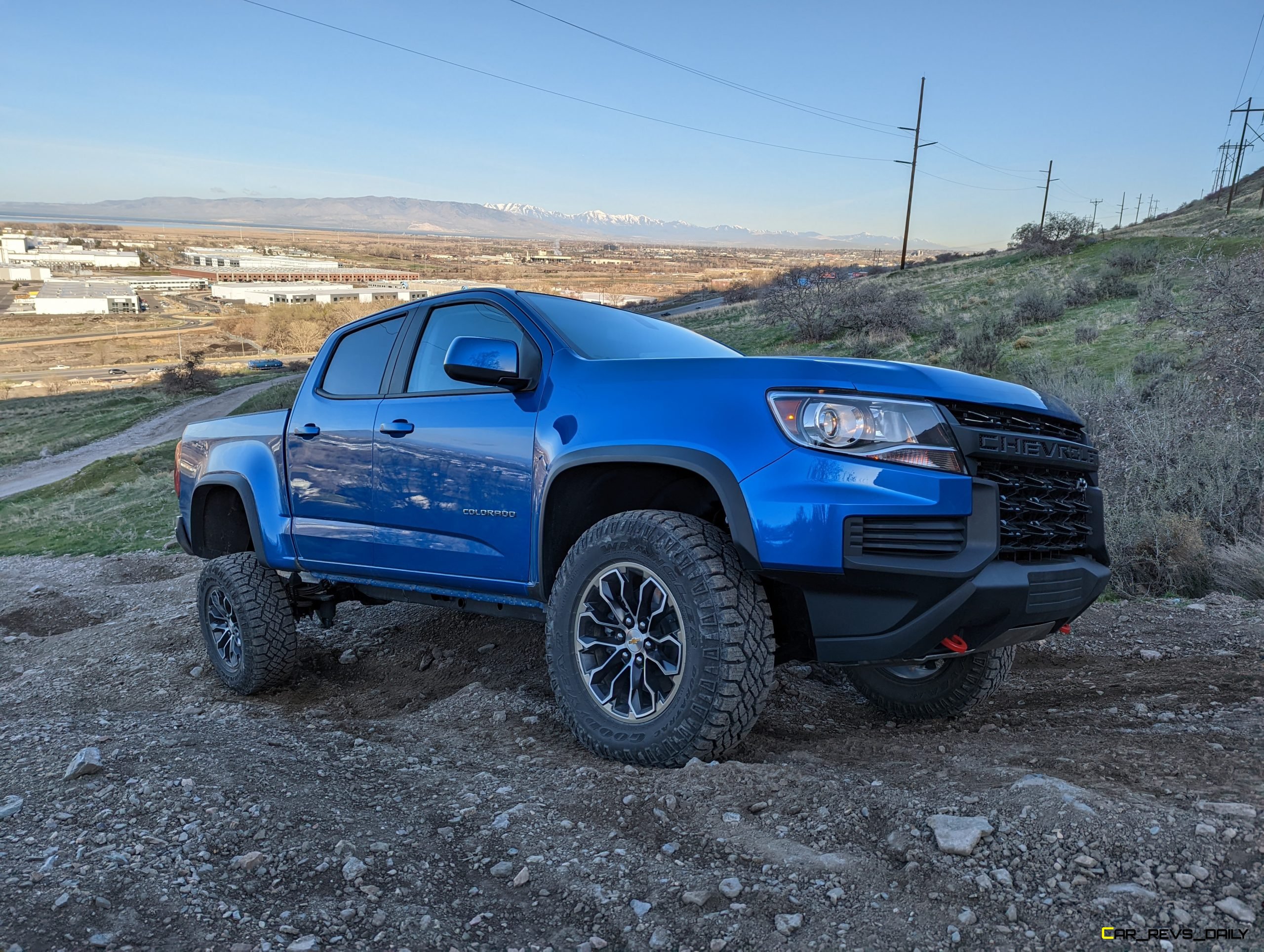
Matthew Barnes is an experienced towing expert. He works as a mechanical engineer and his day job involves testing a variety of vehicles while towing trailers of all types and sizes. Matt shares his knowledge by writing for automotive news outlets in the evenings. When he’s not working he can be found spending time in the great outdoors with his family. He enjoys camping, hiking, canyoneering, and backpacking. Whenever possible he spends time riding in or on any power sports vehicle he can find and claims he can drive anything with a motor, which probably isn’t true.
Matt lives in the Utah mountains and often posts cool off-roading videos to his Instagram and YouTube channel.


